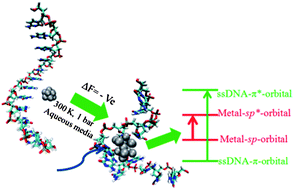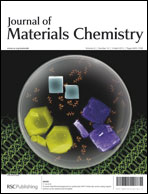Computational studies on structural and optical properties of single-stranded DNA encapsulated silver/gold clusters†
Abstract
Using a combined approach of molecular dynamics (MD) and density functional theoretical (DFT) calculations, we perform the investigation of structures, energetics and optical properties of Ag12 and Au12 clusters in the presence of


 Please wait while we load your content...
Please wait while we load your content...